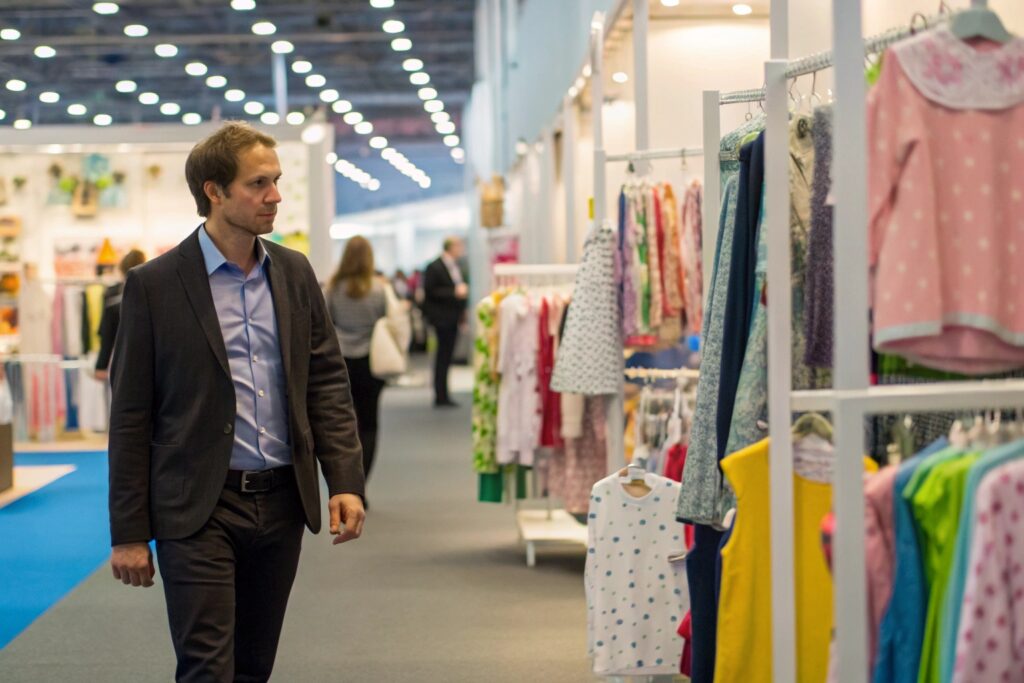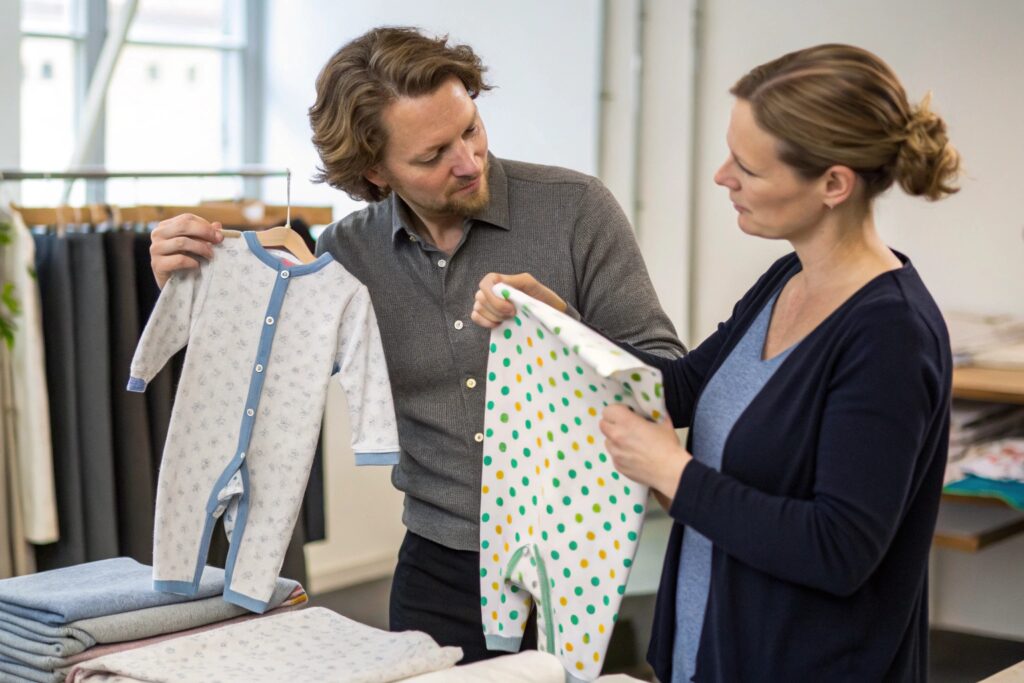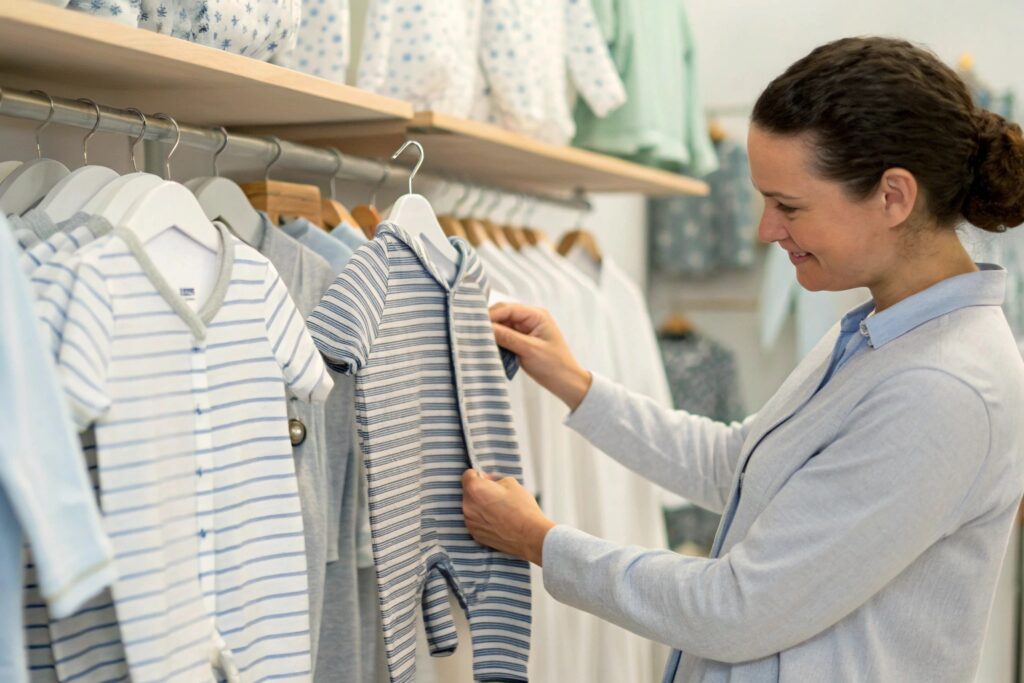You want custom kidswear for your brand—but finding the right manufacturer feels overwhelming. Where do you even begin?
To find a custom kidswear manufacturer, search across trusted platforms, check their customization skills, send detailed inquiries, and approve samples carefully before production.
I’ve helped many clients through this exact process. Let me show you how to avoid costly mistakes and get what your brand needs—on time and within budget.
Where to Search for Custom Kidswear Factories?
There are thousands of suppliers out there, but only a few specialize in custom kidswear. The challenge is knowing where to look.
Search on B2B platforms, attend trade shows, explore factory websites, and rely on referrals from trusted buyers in the kidswear industry.

What online and offline methods give the most reliable results when sourcing custom kidswear factories?
I’ve tested everything from search engines to networking. These are the most effective ways:
| Method | Strength | Best for |
|---|---|---|
| Google Search | Factory websites with direct info | Custom orders, sampling |
| B2B Platforms | Wide range of suppliers | Comparing MOQ & price |
| Trade Shows | Face-to-face trust building | Long-term partnerships |
| LinkedIn Outreach | Direct connection to decision makers | Small factories & startups |
For instance, a client once found us via Google using “custom babywear factory China.” He liked our detailed homepage and booked a video call the next day. Within a week, he had samples shipped.
How do I spot fake listings or unreliable suppliers during the search phase?
This is where things can go wrong. If a listing has:
- No real factory photos
- No phone number or physical address
- Vague answers to customization questions
…then it’s a red flag.
Real manufacturers post actual production images and respond quickly with technical knowledge. At Fumao, we offer product galleries, certification documents, and welcome factory video calls anytime. We want buyers like Ron to feel 100% confident before placing orders.
How to Evaluate a Manufacturer’s Custom Capabilities?
Not every kidswear factory can handle custom designs. Some just make standard stock items. Choosing the wrong one means frustration, delays, and subpar quality.
Check if the manufacturer offers pattern development, logo application, flexible MOQ, and packaging customization—all signs of true custom capability.

What signs prove that a factory has true custom design capabilities for kidswear?
Here’s what I look for when verifying custom skills:
- In-house pattern makers who can work from a sketch or tech pack
- Sample team that can create pre-production pieces within 7–14 days
- Fabric sourcing for rare or organic materials
- Custom dyeing and printing (Pantone-matching, digital print, etc.)
- Logo techniques like embroidery, silicone patch, or heat transfer
Fumao handles all of the above in-house. For example, when one of our clients requested a baby romper with ruffle sleeves, front zipper, and a hand-drawn forest print, we created the pattern and ran a digital print trial—all in 10 days.
How do I verify certifications and quality control systems?
This matters a lot. Especially in kidswear, where safety and compliance are non-negotiable. Ask for:
- OEKO-TEX® certification
- BSCI or SEDEX audit reports
- Wash test and pull test reports
- Factory photos showing quality control checks
When we work with U.S. and European buyers, we proactively send these documents during the first conversation. That way, they know we’re not just good at customization—we’re also safe and compliant.
What to Include in Your Custom Design Inquiry?
If your inquiry lacks key info, the supplier may send incorrect quotes or reject the project. A good inquiry saves time for everyone.
Your inquiry should include product sketches or references, fabric type, quantity, delivery deadline, and branding requirements.

What are the most important details to share with a potential kidswear manufacturer?
Here’s a breakdown of what to send:
| Detail | Why it matters |
|---|---|
| Style references | Helps the factory visualize your design |
| Fabric preference | Impacts price, MOQ, and lead time |
| Quantity per style | Allows clear cost calculation |
| Sizes and measurements | Ensures proper pattern making |
| Branding needs | Determines label, tag, and print options |
| Target market | Impacts compliance and packaging choices |
When one of our new clients sent only a photo and asked, “Can you make this?”—we had to ask 12 follow-up questions. Now, we send a simple form with everything needed. Clients who fill it out get faster, more accurate quotes.
How can I write an inquiry that shows I’m a serious buyer?
Use clear bullet points, professional language, and include your company details. Here’s an example:
Hello,
I’m looking for a reliable factory to produce custom kidswear for my U.S. brand. We’re planning to start with 500–800 pcs per style.Here’s what we need:
- Style: Toddler hoodie with zipper
- Fabric: Organic cotton fleece
- Logo: Embroidery on chest
- Sizes: 2T, 3T, 4T, 5T
- Packaging: Kraft paper wrap with sticker label
Please share your experience, MOQ, and sample process.
Looking forward to your reply.Best regards,
Ron
When we receive inquiries like that, we prioritize them. It shows you know what you want, and you’re ready to move forward.
Tips for Sampling and Approving Custom Kidswear?
Even if the factory looks great, the sample tells the real story. Rushed approvals lead to big regrets.
Request detailed samples with labels and packaging, provide clear feedback, and test fabric performance before approving the final piece.

How can I manage the sampling process to avoid delays and miscommunication?
Here’s the sampling flow we recommend:
- Design submission – Sketch, tech pack, or reference photos
- Fabric swatch approval – Choose from stock or custom dye
- First sample – Includes size, print, labels
- Revision round – Tweak pattern or details if needed
- Pre-production sample – The final version before bulk
You should also ask for clear photos during each stage. At Fumao, we offer live video sample checks. That way, Ron or any buyer can confirm details without flying to China.
What should I check before signing off on the final custom kidswear sample?
Here’s a checklist I use every time:
- Stitching quality – Clean seams with no loose threads
- Fabric softness and shrinkage – Especially for babywear
- Label placement and spelling – No typos, no crooked tags
- Color accuracy – Match to Pantone code if needed
- Fit – Measure against your size chart
- Packaging – Check logo, material, and folding method
Some clients skip this step, and the bulk order ends up with errors. I once saw a misspelled brand name on 1,000 labels because the sample was rushed. Since then, I never approve a sample without zooming in on every inch.
Conclusion
Finding a custom kidswear manufacturer is not about luck—it’s about knowing where to look, how to communicate, and how to test before production. The right partner brings your designs to life, at scale and with care.










